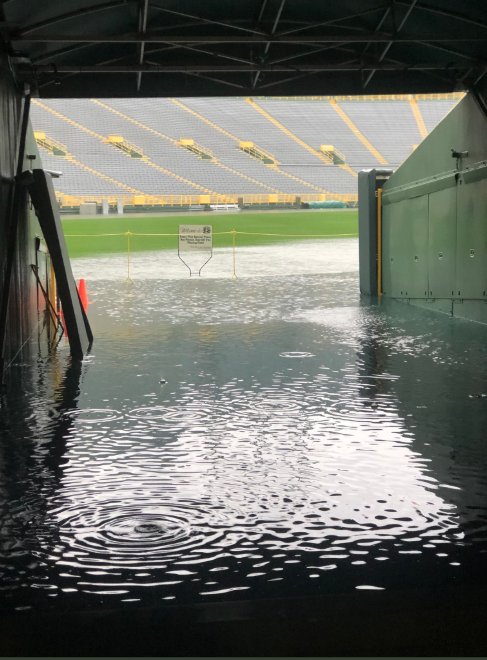By Katy Galimberti, AccuWeather staff writer
August 31, 2018, 10:07:33 AM EDT
Tropical Storm Lane released record-breaking rainfall on Hawaii, triggering devastating flooding and debris flows across Hawaii last week.
Though Lane didn't make landfall, hundreds of homes sustained damages. On the Big Island, some areas received up to 4 feet of rain.
Over 14,000 customers were left without power on Maui and the Big Island at the height of the storm, mostly from trees falling on power lines.
Nearly 40 people were rescued from floodwaters over the weekend in the eastern part of the Big Island, according to the Associated Press.
Meanwhile, the first snow of the season fell across the Pacific Northwest Sunday into Monday as an autumnlike storm swept across the region.
The storm slashed temperatures by 20 to 30 degrees Fahrenheit, leading to the unseasonal snowfall. Most of the snow fell across the higher elevations including areas of Glacier National Park, Yellowstone National Park and Grand Teton National Park.
Accumulations were light with most areas receiving just a coating to an inch or two of snow.
Severe thunderstorms swept across part of the north-central United States this week, bringing another round of damaging winds and flooding downpours to the region.
More than 100,000 lost power across Iowa, Michigan and Wisconsin. One person was injured near Thornton, Iowa, after a tractor trailer was blown over on Interstate 35.
Wisconsin Gov. Scott Walker declared a state of emergency in six counties due to the damaging flooding across the region.
Cars were stranded on flooded roads in Green Bay, Wisconsin, after storms unloaded over 2 inches of rain in just a few short hours. Parts of Lambeau Field were also flooded following the torrential downpours.
While Lambeau was empty, sweltering heat took over the U.S. Open this weekend in Flushing, New York.
For the first time in history, organizers called for a 10-minute relief break during men's play on Tuesday as temperatures soared into the 90s. Five players withdrew from play due to the heat.
The 10-minute break before the third set is called when the heat stress index is at least 86 F, a rule that has been in women's play for the past three years.
"It wasn't fun to play in the heat," Márton Fucsovics, who lost in four sets to Novak Djokovic, said to BBC News. "I was dying after each point. It was too hot for tennis. It's dangerous."

Fans use umbrellas to shelter from the sun as they watch the match between Victoria Azarenka, of Belarus, and Daria Gavrilova, of Australia, during the second round of the U.S. Open tennis tournament, Wednesday, Aug. 29, 2018, in New York. (AP Photo/Frank Franklin II)
Western wildfires have erupted in the U.S. and Canada this summer, and officials have declared 2018 as the worst fire season on record for British Columbia, according to CBC News.
Fires have charred more than 8,067 square miles (12,984 square km), breaking the previous record set just last year. More than 500 fires were actively burning this week.
In Europe, a large and dangerous wildfire broke out to the southwest of Berlin late this week.
The blaze, burning an area about the size of New York City, has forced at least 500 people to evacuate and pulled 600 firefighters on the scene.
RELATED:
2018 fall, winter weather expected to drastically influence consumer spending in US
Hawaiian sports unite the islands despite Hurricane Lane's devastation
These are the 10 most dog-friendly cities in the U.S.
This map will tell you exactly when fall foliage will peak this year
2018 fall, winter weather expected to drastically influence consumer spending in US
Hawaiian sports unite the islands despite Hurricane Lane's devastation
These are the 10 most dog-friendly cities in the U.S.
This map will tell you exactly when fall foliage will peak this year
Firefighters have had to deal with exploding World War II ammunition that remains buried within the burning forests making the situation even more difficult to control.
“We’ve had forest fires before but never of this magnitude,” said Treuenbrietzen Mayor Michael Knappe.
A new, independent report said that close to 3,000 people died in Puerto Rico due to Hurricane Maria.
Researchers at the George Washington University Milken Institute School of Public Health (GW Milken Institute SPH) analyzed death certificates and other mortality data for six months from September 2017 and February 2018.
The new death toll is 22 percent greater than the number of deaths that would’ve been expected during that period in a year without the deadly hurricane, according to the report.



No comments:
Post a Comment